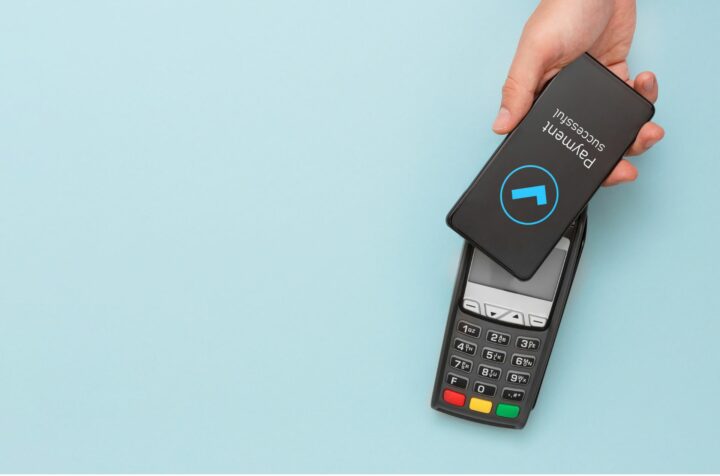If it feels like new payment technologies are constantly appearing, it’s because they are. And let’s be honest, it’s the only way to meet the ever-evolving needs of consumers and businesses. That’s why it’s no surprise that these new technologies are having a significant impact on the banking, financial services, and insurances (BFSI) as well as e-commerce industries.
They’re not only making payment processing more efficient, user-friendly, and faster, they’re improving the customer experience by ensuring payment flows are seamless, more convenient, and highly secure. However, while they are enabling businesses to expand their customer base and increase revenue, they’re also enabling the rise of more competition offering innovative payment solutions. For traditional players, this means striving to innovate and adapt.
This is why payment testing, utilizing the latest in payment testing tools, is a critical part of a payment system implementation. You simply cannot get this wrong. Whether you’re developing a contactless payment system, using mobile payment technology, introducing cryptocurrency payments, or even using biometric authentication, everything must function correctly and be accurate, seamless, and secure.
It also has to do the seemingly impossible… provide an endlessly positive, highly adaptive, and completely personalized customer experience.
Today’s customers are certainly spoilt for choice and this trend is constantly growing. Just consider super apps, which enable users to effortlessly access a range of services from one platform, including bill payments, insurance, money transfers, investments, and much more.
That, however, is just the tip of the iceberg.
Paying attention to your customers in a digital-first future
Discover why getting the customer experience right while ensuring payments and authentications are validated and secure is ever-more essential.
Find out moreYou can always bank on change
Both the BFSI and e-commerce industries are quickly developing multiple solutions utilizing a variety of technologies, from artificial intelligence and machine learning, to robotic process automation, and cloud computing. Many of which are enabling the latest innovations in payments.
Let’s take a quick look at some of today’s most popular.
…in BFSI
- Digital payments: Physical cash is so yesterday. The speed, security, convenience, and flexibility of digital payments (whether online banking transfers, using a digital wallet, or payment services such as PayPal, and even cryptocurrencies like Bitcoin) will see it continue to increase in popularity. In fact, 94.3% of consumers were found to make at least two online payments per month.
- Personal finance apps: People want control over their finances and such apps are ideal to help them manage their finances, track expenses and investments, monitor credit, prepare their taxes, and plan their budgets. All via their smartphone, tablet, or PC.
- Contactless payment technologies: Making a transaction without physically touching a payment terminal or handing over a card has its benefits even in our post-pandemic world; let alone the speed, convenience, and security of doing it with a contactless card and its embedded NFC chip, via an app, or a wearable payment device.
- Open Banking APIs: Whether a budgeting app, investment tool, or a loan application service, open banking APIs enable the secure sharing of financial data with third-party developers, which gives customers more flexibility and choice when it comes to managing their financial data.
- Biometric authentication/payments: Who needs a password or PIN anymore? By using unique physical and behavioral characteristics, such as fingerprints, facial recognition, iris scans, and voice prints, people can now quickly and securely verify their identity and authenticate payments. A Testbirds Crowd Survey found that 48.8% of consumers believe that fingerprint authentication ensures the most secure payments.
…in E-commerce
- Mobile payments / digital wallets: With estimates that over 86% of people around the world have a smartphone, it’s clear that using it as a payment instrument to store and manage financial information and make payments quickly and easily without cash or cards, is a clear benefit to customers.
- Omnichannel payment options: Everyone wants flexibility and convenience. By offering payment methods that are available across multiple channels – online, mobile, and in-store – customers can pay how they want while receiving a seamless payment experience across all touchpoints (and providing businesses with valuable data and insights into customer behavior).
- Buy now, pay later (BNPL) options: With BNPL, customers can purchase goods or services now and defer payments until a later date. Interestingly enough, 29.5% of consumers would abandon their purhcase if BNPL was not an available option at the checkout page. This contributes to BNPL’s increasingly popularity with younger customers, as it provides flexibility and convenience for those without access to traditional credit options and/or who do not want credit card debt.
- Cryptocurrencies and blockchain technology for payments: Likely to play an increasingly important role in payments in the coming years, crypto and blockchain offer a range of benefits, from decentralization (providing better autonomy and control over funds), greater security, faster/cheaper transactions, borderless payments, and increased financial inclusion for those unable to access traditional services. 13.5% of consumers would not complete their purchase if crypto payment options was not available at the checkout page
- Real-time payments: Nobody wants to wait hours or days to get their money. With real-time payments, fund transfers can be done within seconds, and can be used in a large range of payment transactions – from peer-to-peer transfers to merchant payments and bill payments. Ideal for time-sensitive transactions, they can also lower costs by using fewer intermediaries.
- Voice payments: With the rapid rise of voice assistants (such as Amazon’s Alexa and Apple’s Siri), payments initiated and authorized by voice commands are becoming immensely popular. Offering convenience, accessibility, and higher security (voice recognition), voice payments can also be seamlessly integrated with other digital services, from smart devices to shopping apps. Payment processing has never been so hands-off!
For all of that though, there is one clear trend that is driving all industries. The evolution into experience-driven businesses that put the creation of engaging and positive customer experiences at the core of their business strategy – being customer-centric, having an omnichannel presence, and being innovative in ways to boost the experience (using AI, etc).
Make your customer journey memorable
Discover why understanding your customers’ needs, such as their preferred payment methods, can give you a huge advantage.
Find out moreAs raised at the annual Money20/20 Europe, this is being powered by technology that is becoming more standardized, neutral, and permission-based.
But that’s a good thing. And here’s why:
Interoperability by design
Instead of proprietary silos, standardized technology, which features common standards and guidelines, will become established across Europe. While several initiatives currently exist, such as the Digital Single Market Strategy, the need to develop highly secure and reliable cross-border services that boost efficiency, reduce costs, and increase innovation will see technology standardization continue to be adopted. This will create huge opportunities for e-commerce brands and payment organizations.
Neutrality by choice
Payment systems being owned and controlled by a single company are becoming a thing of the past. Today, it’s all about open and interoperable payment systems that enabled different systems and devices to seamlessly work together (consider Europe’s Payment Services Directive 2 (PSD2), which mandates the use of open, standard APIs for account access and payment initiation). This removes barriers to entry for new players and gives consumers more choice –all while leveling the playing field and encouraging the development of new and innovative payment instruments and payment systems.
Permission-based by default
The shift towards permission-based payment models for payments is growing – both for the consumer and for companies wanting to participate in open, interoperable payment networks. This not only promotes competition and innovation but helps to create a more customer-centric and secure environment. Again, consider the PSD2, which requires banks to provide third-party payment providers with access to (after a customer’s consent) payment accounts.
Overall, this move towards a level technological playing field has multiple benefits:
- Less Complexity: Payment technology standardization means that there is a common set of requirements and specifications for all payment systems, which greatly simplifies the process of testing and integrating payment systems.
- Increased Interoperability: Different payment systems can communicate and work together seamlessly, which enables omnichannel payments to be accepted from multiple sources.
- Faster Time to Market: Such payment technologies ensure businesses can get products and services to market faster, which helps expand their reach and increase revenue streams.
- Improved Security: Standardization improves the security of payment systems by using common requirements and specifications, which helps ensure that payment systems meet the highest security standards and reduce the risk of fraud and data breaches.
- Lower Costs: By developing a testing framework that can be reused across different payment systems, businesses can save time and money on testing and integration.
Pay your own way
For today’s customers, having more control over their data isn’t just a ‘nice to have’, it’s expected. But for financial institutions, this is a good thing. Not only can you create a more secure and customer-centric environment, but one that:
- Builds trust: When the customer has control over their data, you improve trust and transparency, and this helps ensure the customer is more comfortable sharing their data.
- Improves personalization: They share what they want and by analyzing this specific data, you can better tailor your services to their needs. After all, 54.3% of consumers think that businesses use their payment data to improve the customer experience, according to Testbirds Crowd Insights.
- Boosts risk management: By using the data that your custotmers provide; you can better assess their risk level when it comes to lending or investing.
- Enhances innovation: When the user is in control, they’ll feel more comfortable about sharing data, and this gives you new sources of information not previously available to develop products and services that truly meet their needs.
- Ensures regulatory compliance: New regulations are appearing everywhere that require businesses to give individuals control over their data – that you can do it, means you’re covered.
Payment Testing
Find out how you can validate your payment flows and processes with real transactions by real users.
Discover moreMeeting the challenge
Being innovation-ready and set to make the most out of a level ‘paying’ field certainly won’t be easy. But ultimately, it is likely to smooth out a range of challenges being experienced today.
As payment technologies become more about orchestrating experience-driven experiences, the consumer must be front and center of all considerations, and that includes your payment testing.
But payments must be tested outside of the lab.
With real people doing the testing, in real-world conditions, and making real transactions, you can perfect the payment journey and know that regardless of the trend, your solutions will always have a competitive edge.








